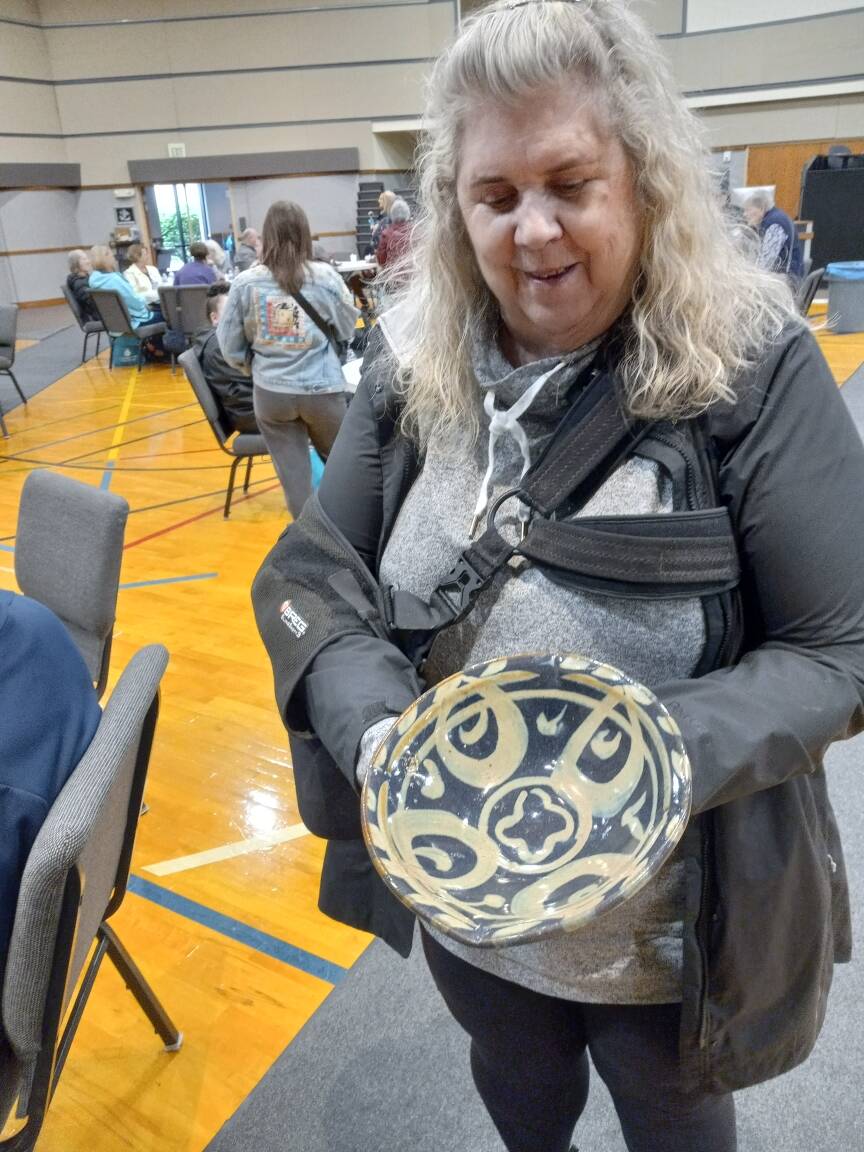Looking around Grace Community Church between 11 a.m. and 1 p.m. April 26, one saw the best of Auburn in action.
Students from Paul Metivier’s pottery classes at Green River College rubbed shoulders with students from Auburn High School’s culinary program while rubbing shoulders with members of Grace Community Church.
And all of them rubbing shoulders, 200-plus people, were delighted to part with a couple of bucks to belly up to a bowl thrown by those potters containing soup cooked by those students to raise money for the Auburn Food Bank.
Among the crowd was Auburn’s Nancy Peterson, fresh from a bowl of mushroom soup and ooing and awing over her pretty bowl shining under Seacrest purple glaze.
“It’s a pretty one,” said Peterson, looking at the piece, which was made by Metivier himself. “I just like the scalloped edges. I love it. It’ll be a table piece.”
It began one day in the early 2000s when one of Metivier’s pottery students, the late Leila Brugger, asked him if she could donate a couple of bowls to an Empty Bowls event. Metivier, who had nothing to do with that event, suggested a “throw off,” where they’d gather a room full of potters to make whole bunch of bowls on the same day in the same place.
And so Auburn’s annual Empty Bowls event, rooted in an old American tradition — the collective effort to help one’s neighbors, to pitch in when and where the need is pressing — was launched. That tradition finds expression across the nation not only in barn raisings, but also in helping folks get back on their feet after setbacks and situations that call for roll-up-one’s sleeves actions.
And the Auburn community embraced the bowl.
“The empty bowl itself is a metaphor for things like ceremony, service, food or the lack thereof,” said Metivier. “An empty bowl lacks abundance, so that is where this idea grew from, and I think that’s why it stuck.”
But over time, organizers realized that many of the bowls made en masse on that one day were not finished, so some had to be recycled. Metivier decided it might be more efficient to spread the pot throwing over the fall, winter and spring quarters, and accumulate what would be needed, typically five per potter as an assignment.
“It gives students a better opportunity to reflect on how they can contribute and make a difference in their community in a collective group. Because it’s not about one potter. It’s not about me. It’s about all of us doing this together to make this kind of event happen,” Metivier said.
The exact number of attendees at last week’s event is unknown, but Metivier said he and his students donated some 268-plus bowls for it.
“I got here about 11:30 a.m., and every table was full when I came, which is great to see. Such a good sign. You see the mayor, you see other school districts sitting here and a lot of Green River people out out here with their families to support this, which is really important,” Metivier said.
Gail Spurrell coordinated the event for the first years.
“Then came the pandemic, and we had to figure out what to do for the drive-by events, then I decided maybe it’s time for somebody else to step up and take over,” Spurrell said. “It’s always such a great event to bring the community together, isn’t it?”


